Rental Review: 2014 Toyota RAV4 LE

Change is inevitable, but it isn’t always predictable. Such was the case with a recent death in the family. Eighty-five-year-olds typically aren’t long for this world, but her stroke and swift passing was still sudden.
After some hurried preparations and two flights, I found myself standing on a rental lot. To distract myself from weightier matters, I sought out something I hadn’t driven before. The Toyota RAV4 was redesigned for model year 2013, but I hadn’t driven one yet. Hoping for a vehicular cocoon, I blew through the paperwork and headed east for New Jersey.
Most of the press coverage about the RAV4’s redesign focused on three obvious changes. TTAC’s own Alex Dykes went further and provided an exhaustive review, but the basic changes are significant – the V6 was dropped, the external spare tire (now a just a compact) migrated under the hatch floor, and the rear hatch itself was redesigned to open on upright struts like the rest of the compact CUV class. Less discussed was the fact that rear visibility was also discontinued.
They don’t fix blind spots on the interstate, but at least a rear camera and 6.1 inch LCD screen are now standard on all trims in 2014. Entune, Toyota’s infotainment system, posed no major issues. Maximum brightness and “day mode” were not enough to prevent the LCD screen from washing out in sunlight though. A higher-resolution 6.1 inch LCD, optional on the LE and standard on the upper trims, may perform better but was not installed on my vehicle.
As a man who occasionally wears sandals and socks, I try to avoid making stylistic judgments (to my wife: I’m JUST getting the mail!). However, there are a lot of interior materials and designs competing for attention – faux carbon fiber on the center console, faux stitching along the dash, three types of display screens feeding information to the driver, etc. It’s a busy place, and the ergonomics aren’t flawless. Buttons are hidden behind the steering wheel, and the second 12v receptacle (recessed at the base of the IP) can only be found by touch.
My father’s new Escape SE provided a stark contrast. In a decidedly non-scientific poll, everyone who sat in both vehicles preferred the design and perceived richness of the Ford. A RAV4 XLE, as opposed to my entry-level LE, would be a better comparison on paper. In reality though, the toys brought along by the XLE (dual-zone temperature, power moonroof, etc.) do nothing to improve the harmony of the space.
Whatever the RAV4 lacks in interior design, it makes up for in space. The Toyota straddles the median of the class in most physical dimensions but offers both more rear legroom and more usable cargo capacity than my father’s Escape and several competitors. The rear bench is flat but sits high off the floor, and all three seats feature LATCH anchors for child seats. The bench’s rake adjustment is also generous.
Most competitors, especially the CR-V, offer more cubbies and small touches, but RAV4’s overall cargo capacity is excellent. Hauling five passengers and luggage for a weekend is viable, and seven feet of length are available when the 60/40 rear seats are folded. The rear floor is not quite flat (contrary to Toyota’s literature), but the rear hatch can be closed with 2”x4”x8’ boards propped against the front seatbacks.
Fuel economy was also a highlight. Despite just 2,400 miles on the AWD trucklet, my always-light foot averaged 29 MPG in mixed driving around Philadelphia and suburban New Jersey. The ability of the 6-speed automatic’s torque converter to lock at just 12mph also helped me beat EPA estimates for both FWD (24 city, 31 highway, 26 combined) and AWD (22 city, 29 highway, 25 combined).
This isn’t a case of extreme power deprivation. The direct-injected 2.5 liter inline four, the only engine available on all trim levels, features dual variable-valve-timing and what Toyota dubs “intelligence.” ( Very HAL9000, Toyota). Class-average output of 176 HP and 172 pound-feet of torque is married to a similarly class-average 3,435 pound curb weight. You won’t win many drag races, but you won’t be desperate for tailwinds.
The Mitsubishi Outlander I recently drove was considerably lighter and noisier. I expect most consumers will prefer Toyota’s tradeoff. Road, wind and engine noise are all subdued around town and at highway speeds. The RAV4 isn’t quite “hushed”, but the N(oise) of NVH is favorable. So what about V(ibration) and H(arshness)?
This is where things start to get a little… rough. Dodge apparently isn’t the only one making “Shaker” hoods these days. A mild vibration could be felt through the steering wheel at idle and, more surprisingly, also seen along the center of the hood. The engine also makes a grating whine on particularly cold starts, but this is true of many competing inline fours.
Because this is the Internet, the Sport button must be discussed. The car’s standard tune is obviously oriented for efficiency – RPMs stay low, and the throttle tuning is best described as relaxed. You’ll overcorrect trying to merge onto the freeway, and ECO mode just furthers these tendencies. Engaging Sport mode doesn’t fire a hidden Windsor 302, but the electric steering tightens, transmission shifts quicken and throttle tip-in noticeably sharpens. If you need to shoot through a gap in traffic, Sport mode is helpful.
There are two major criticisms left to address. First, the RAV4 did poorly in the IIHS’s controversial new small-overlap test. Customers who can look past this may instead be put off by the crossover’s ride. Grandma won’t confuse this for her old Avalon. Even with the standard 65-series tires, impacts are sharp. Does handling at least benefit?
Ehhhh… no. The beloved Mazda CX-5 and Ford Escape both do relatively well in transition. Take a turn at moderate speed in the RAV4, and the weight suddenly spills over with more body roll than expected. Understeer builds quickly, and confidence never does. The brakes are scrub speed in a commendably linear manner, but this just isn’t a car you want to hustle. At best, this is a simulation of sportiness.
The RAV4 is still competitive where it counts for most consumers. Despite its status as the base trim, the LE is not missing any amenities. Power windows and locks, remote entry, folding rear seats, Bluetooth, the aforementioned LCD infotainment system and backup camera, and most other expected niceties of 2014 are present and accounted for. Even the steel wheels disguise their true nature well.
It is possible to spend over $33,000 on a fully-loaded RAV4 Limited, but you get the same engine, transmission and interior design as the proles who spent just $24,410 for an LE. The RAV4 has a lot going for it without checking a single option box, but consumers have no ways to fix issues like ride harshness or the ergonomics of secondary controls.
Change is inevitable, but it isn’t always predictable. In the case of the RAV4, a little more change is needed to become best in class.

More by Daniel Latini
Latest Car Reviews
Read moreLatest Product Reviews
Read moreRecent Comments
- Mike-NB2 This is a mostly uninformed vote, but I'll go with the Mazda 3 too.I haven't driven a new Civic, so I can't say anything about it, but two weeks ago I had a 2023 Corolla as a rental. While I can understand why so many people buy these, I was surprised at how bad the CVT is. Many rentals I've driven have a CVT and while I know it has one and can tell, they aren't usually too bad. I'd never own a car with a CVT, but I can live with one as a rental. But the Corolla's CVT was terrible. It was like it screamed "CVT!" the whole time. On the highway with cruise control on, I could feel it adjusting to track the set speed. Passing on the highway (two-lane) was risky. The engine isn't under-powered, but the CVT makes it seem that way.A minor complaint is about the steering. It's waaaay over-assisted. At low speeds, it's like a 70s LTD with one-finger effort. Maybe that's deliberate though, given the Corolla's demographic.
- Mike-NB2 2019 Ranger - 30,000 miles / 50,000 km. Nothing but oil changes. Original tires are being replaced a week from Wednesday. (Not all that mileage is on the original A/S tires. I put dedicated winter rims/tires on it every winter.)2024 - Golf R - 1700 miles / 2800 km. Not really broken in yet. Nothing but gas in the tank.
- SaulTigh I've got a 2014 F150 with 87K on the clock and have spent exactly $4,180.77 in maintenance and repairs in that time. That's pretty hard to beat.Hard to say on my 2019 Mercedes, because I prepaid for three years of service (B,A,B) and am getting the last of those at the end of the month. Did just drop $1,700 on new Michelins for it at Tire Rack. Tires for the F150 late last year were under $700, so I'd say the Benz is roughly 2 to 3 times as pricy for anything over the Ford.I have the F150 serviced at a large independent shop, the Benz at the dealership.
- Bike Rather have a union negotiating my pay rises with inflation at the moment.
- Bike Poor Redapple won't be sitting down for a while after opening that can of Whiparse



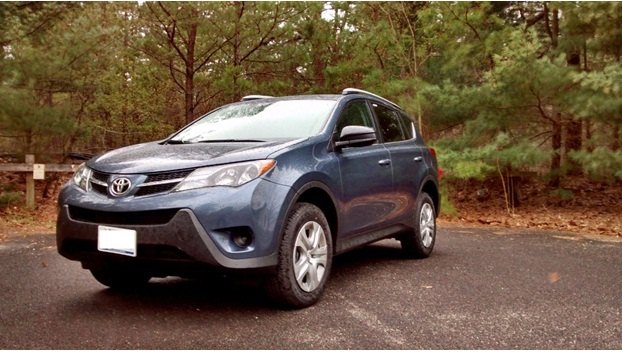




















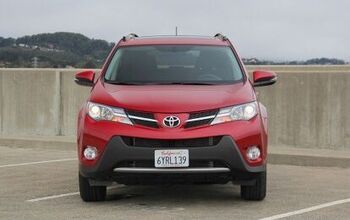
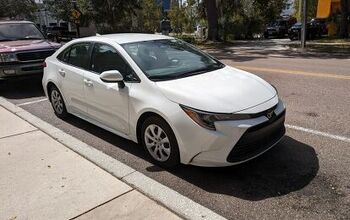
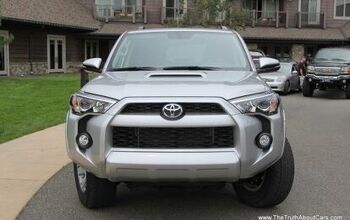
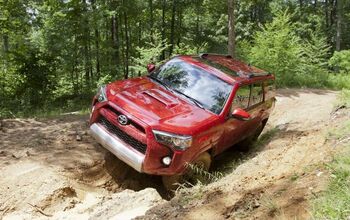
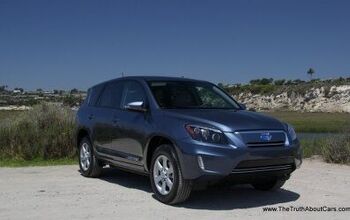










Comments
Join the conversation
I rented one of these just a couple of days ago, and I can say this review is spot on. My takes: The good. With the rear seats down, the RAV4 has loads of storage. When I arrived at my daughter's college and saw everything she had to bring home I thought, "No way." But the vehicle accommodated numerous suitcases, boxes and her bicycle (with the front wheel still on), with room to spare. Also, I made the trip there and back--350 miles--on about 13 gallons of gas. The bad. It's tedious to drive, with mushy steering. Also, the brakes don't inspire confidence. The vehicle had 24K miles, so I'm assuming it didn't need a break job. Rear and rear/side visibility is a problematic, and, as the review notes, the screen tends to wash out in the sun, and when it does you lose the rear camera view. The ugly. The dashboard looks like a 1980s box radio. Also ugly, though not the car's fault, was having to pay $40 plus fees etc for returning the car less than a half hour late (I usually rent from another company that's more forgiving about this). Renters be aware: When that company says it "tries harder," it means to tries harder to suck money out of your wallet.
So very sorry to hear about your loss... Driving to funerals can be quite an experience on the inside. I disagree with some of the people here as I am still a hardcore RAV4 fan. I still believe that although there have been massive changes on the outside, the Toyota RAV4 is still a very stylish, comfortable and sporty car. Though the brand new seating could be a little bit more comfortable, they take a bit of time to shape to your body's requirements but once they're spot-on, everything from the handling to the visibility delivers an overall nice ride.